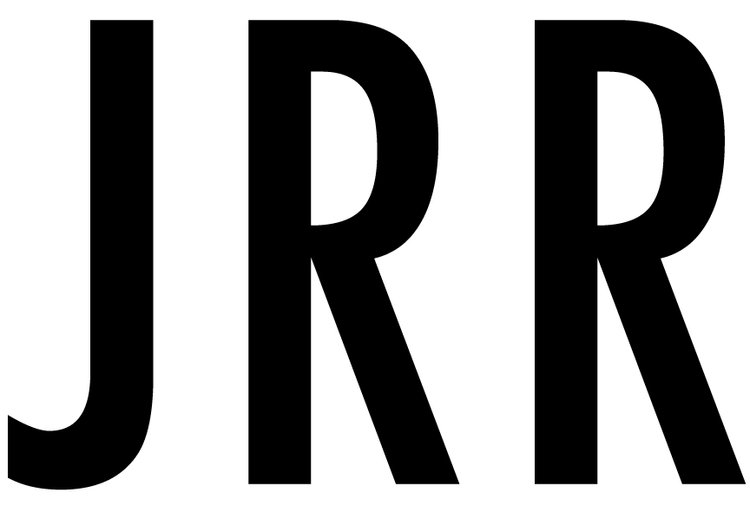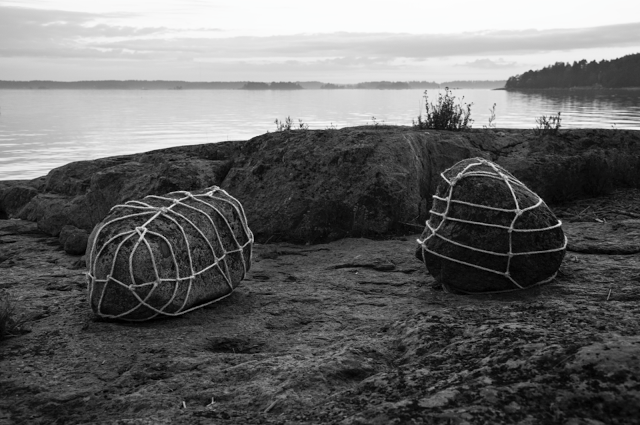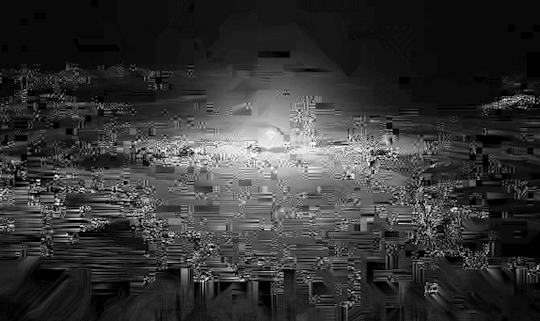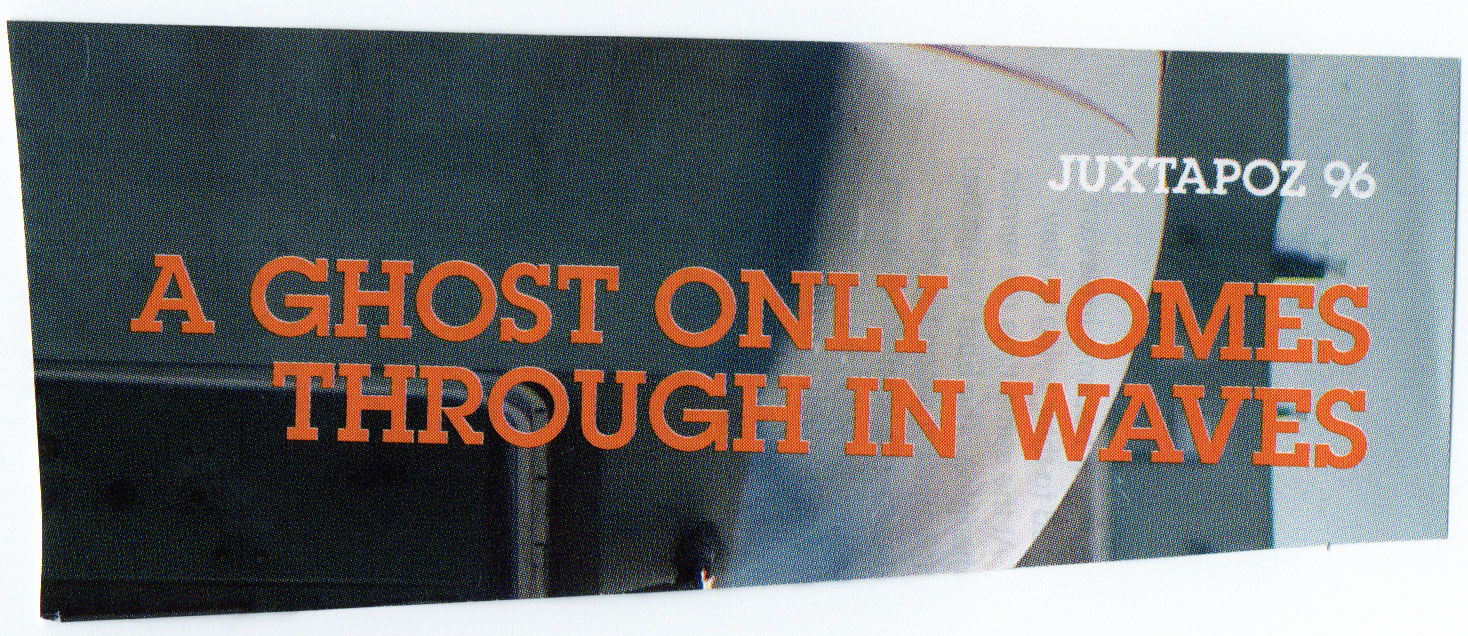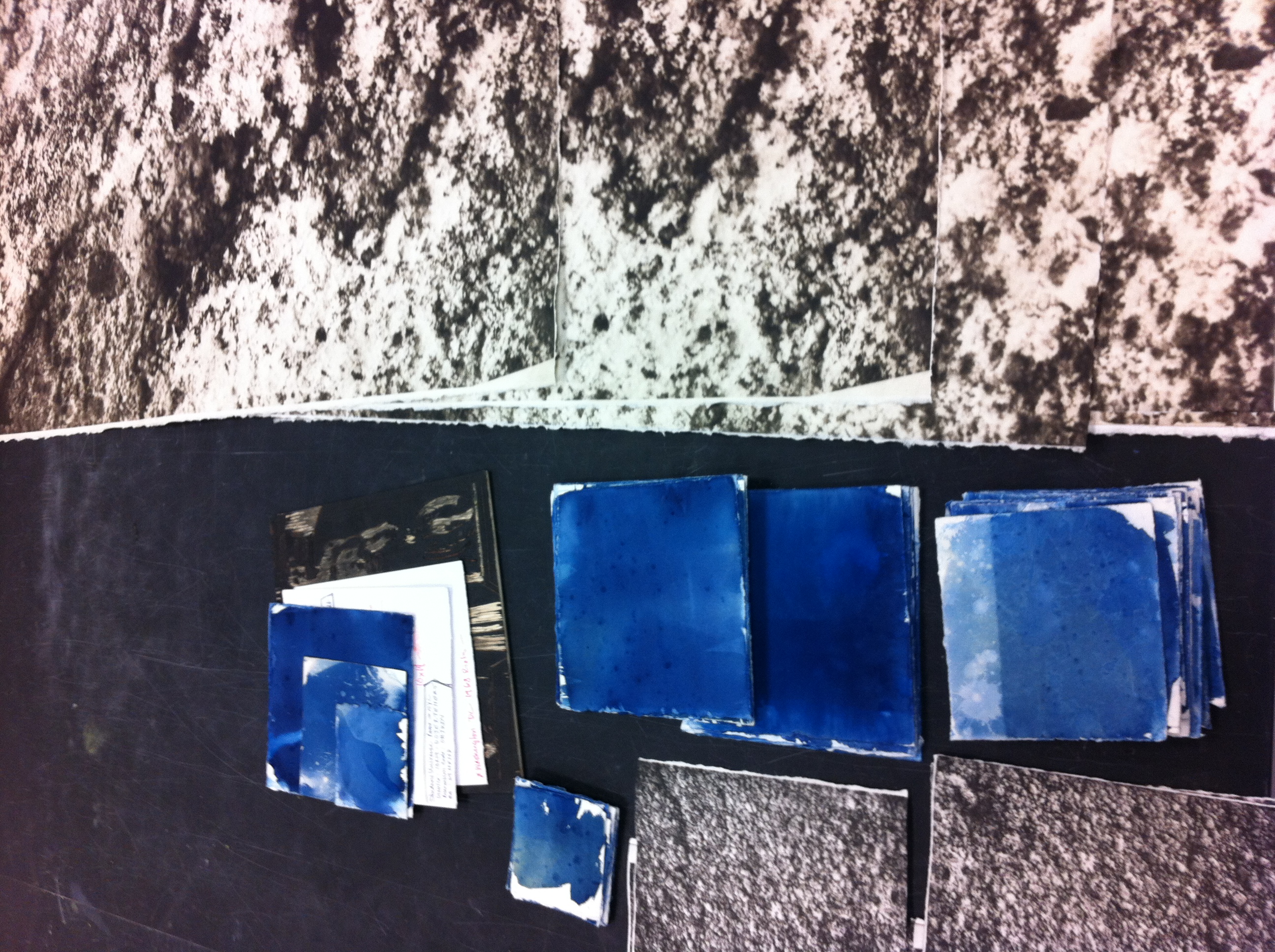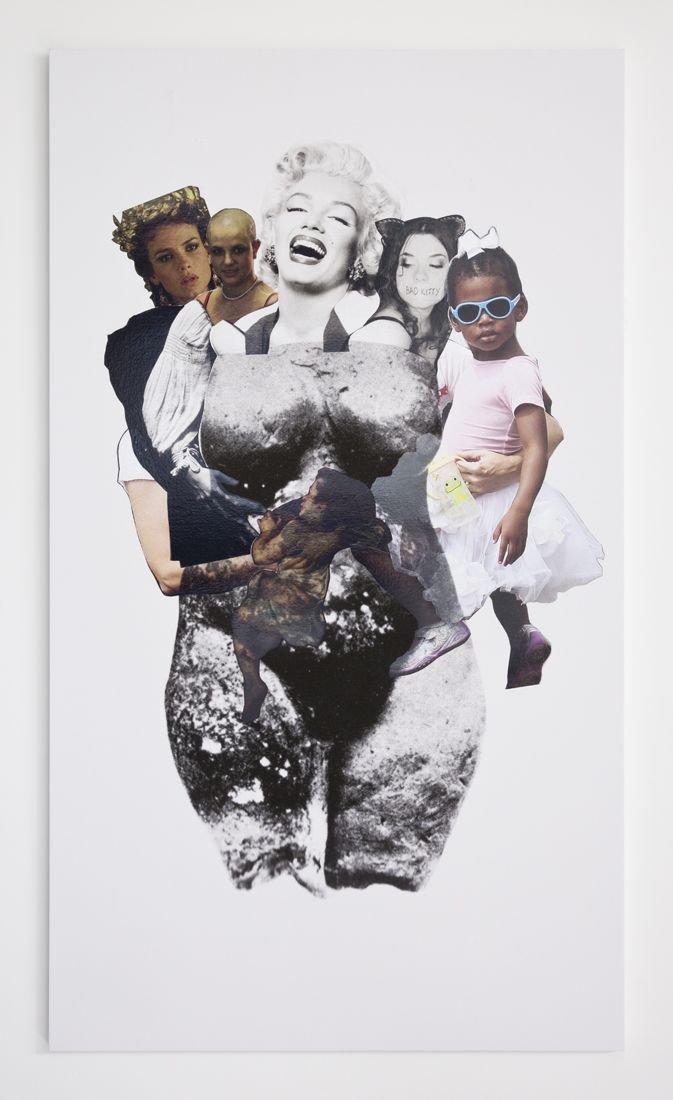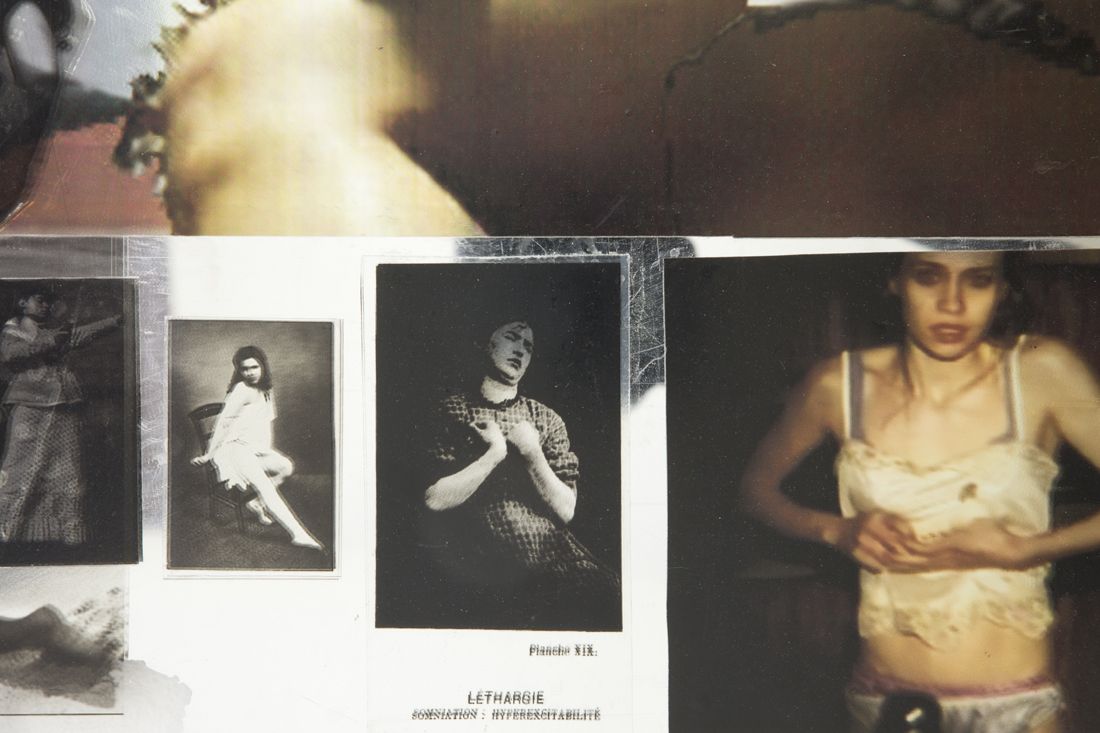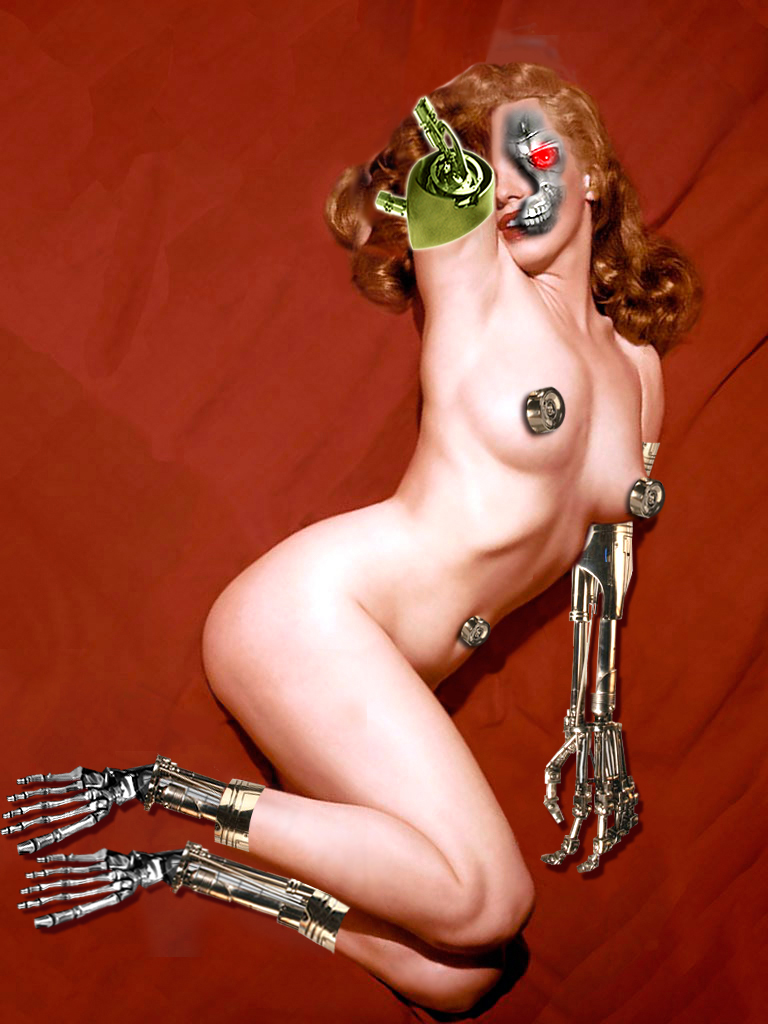In/Side and In/Between.
"Such a collection of ephemeral treasure is an example of how we find the things that tell us who we are, even if it gives instead the impression that a parallel universe of KM’s own work has found him - by carefully infiltrating the most ordinary places: the local newspaper, or the fold of a carton of milk, or the back of a parking ticket." (Elliman*)
*Who is Elliman? Or KM? I dunno, beats me - I wrote the above down on a piece of paper that I found some time later and forgot where I got it from.
Below: The work of Mia Feuer
Josely Carvalho - Architectando: Elias’s Nest, 2009.
In 2007, the artist photographed a small bird that was in the process of building its nest when it flew into a glass window of her home. The photos made her understand the difficulties birds have in building and maintaining their shelters. From these photographs, Carvalho constructed a sculptural installation, Nidus Vitreo (Glass Nest), a nest of one thousand branches molded in glass resin. In this installation, she added sound and projection both manipulated algorithmically through a computer program. The artist also produced four original smells in collaboration with Givaudan do Brasil. The four smells are: Smell of Nest, Wet Earth, Open Sea and Hot Sun. These labor-intensive ephemeral sculptures are based on avian architecture and the smells in them reinforce their impermanent character. The first sculptural version, Architectando, was presented at the Museu de Arte Contemporânea in São Paulo in 2009. A larger and more complete sculptural version was shown at the Museu Nacional de Belas Artes in Rio de Janeiro in 2010. Two years later, Carvalho converted the sculpture into an abandoned nest, Passages, at SESC Gallery in São Paulo.
Thoughts when living through the Trump years and its aftermath:
"To trust immediate intuition rather than collective examination that is rational, careful and intelligent is not wisdom. It is the presumption of an old man who refuses to believe that the great world outside his village is any different from the one he has always known."
- Carlo Rovelli in Seven Brief Lessons on Physics
“Consider an adult who tends to the traumas of a child: spilled milk, a broken toy, a scraped knee. As adults we know that kids have no clue of what constitutes a genuine problem, because inexperience greatly limits their childhood perspective. Children do not yet know that the world doesn’t revolve around them.
As grown-ups, dare we admit to ourselves that we, too, have a collective immaturity of view? Dare we admit that our thoughts and behaviors spring from a belief that the world revolves around us? Apparently not. Yet evidence abounds. Part the curtains of society’s racial, ethnic, religious, national, and cultural conflicts, and you find the human ego turning the knobs and pulling the levers.
Now imagine a world in which everyone, but especially people with power and influence, holds an expanded view of our place in the cosmos. With that perspective, our problems would shrink—or never arise at all—and we could celebrate our earthly differences while shunning the behavior of our predecessors who slaughtered one another because of them.”
Piero Manzoni Achrome, 1961
Alexis Arnold, A Brief History of Time, 2015
01/25/18
Above: Anna Reivilä - Bond
According to Japanese religious ceremonies, ropes and ties symbolize the connections among people and the divine, as a mean to identify sacred space and time.
Inspired by Nobuyoshi Araki's images and their mixture of raw violence and beauty, I study the relationship between man and nature by referring to the Japanese bondage tradition. The Japanese word for bondage, kinbaku-bi, literally means “the beauty of tight binding”. It is a delicate balance between being held together and being on the verge of breaking.
I search spaces where nature’s elements combine to create interesting natural tensions and continue this dialogue trough my interpretations by extending, wrapping and pulling upon these indigenous forms. I create a new sense of volume from the existing components.
Using ropes as lines is my form of drawing. The lines create interactions, making connections between the elements—a reinterpretation of the landscape. These three-dimensional drawings are physically unstable—they exist only for the moment. By recording the process the photograph becomes part of the piece.
Robert Smithson installed 12-inch-square mirrors to the site in his project "Yucatan Mirror Displacements" 1969. The mirrors reflected and refracted the surrounding environment and gave a new angle to see the landscape. In a similar tradition of Smithson’s use of mirrors, my lines show how shapes of the elements and the connections between them come visible when something alien is added. I’m not only changing their essence, but also my own point of view. Every space is different and I’m interested how the volume of any given site can be stretched by the use of several simple lines.
I don’t remember where I specifically got this from, but it was from a gay magazine in the mid-2000’s.
Above: Gego (Gertrud Goldschmidt ), Reticulárea (ambientación), Museo de Bellas Artes, Caracas, 1969
Above: Tomás Saraceno - Galaxies forming along filaments, like droplets along the strands of a spider's web, 2009
Sarah Sze
Weathervane
2012
Garbage - "No Horses" - 2017
The Handmaid’s Tale, Season 1, Episode 3
Blondie, Heart of Glass (Crabtree Remix)
Uploaded by maha hefnawy on 2017-06-28.
What does Eisenman think about when she’s on Fire Island? “Ghosts,” she says, explaining that the island evokes — or rather is haunted by — the spirits of a generation of men and women: artists, thinkers, people of color, the affluent, the middle class, the ignored, the displaced, those let down by their government, those who caught the disease too early, those who didn’t realize they had caught it at all, those who thought they would never catch it but who did, all of those who were lost to the dark times when she first came to New York City in the early 1990s, at the height of the AIDS crisis. Many gay men and women, many of whom would have been her peers, were dead and many more would die later. Her first major institutional show, a group exhibition of wall drawings at the Drawing Center in 1992, occurred the year activist Mary Fisher rebuked the Republicans for their policies of silence, tennis star Arthur Ashe had announced that he had been living with HIV for years, and the FDA approved the use of ddC in combination with AZT. It was a time of further disappearances. Crisis provokes lists: We count what’s gone and what remains. Everywhere the island attests to the dead, to the bodies who are not there, the figures who might have been paintings, the figures who might have loved paintings. “You can feel them there,” Eisenman says.
. . . Eisenman tells me she has been recently spending her days on the island drawing her friends. Later that night, she sends me images of the small works on paper. A woman sits looking at her computer, her head held up by her left hand. A man lies naked on a towel strumming a guitar while a woman, her legs open to reveal tufts of pubic hair, listens intently. Friends lounge on the beach, make a human pyramid, and check cell phones against a backdrop of beach grass. I consider the living as she considers them. Drawing is a way of keeping them there.
"Painting Ghosts," by Andrew Durbin for Out Magazine, October 2015
"Straight photography: The curious term was already in use during the 1880's, as Carleton Watkins and others trekked the West and sent home photographs of a sublime landscape Easterners could scarcely imagine; the unmanipulated prints - sometimes mammoth in scale - sometimes formatted to lifelike stereo - served as simple proof. By the 1900's when modernism hit its mark and photographers such as Paul Strand began propagandizing for photographic objectivity, straight photography came to signify an optical imperative, or "truth," that was a modernist truth of rational science, heroic industry, and social progress. Performing this new reality of twentieth-century modernism, American photographers embraced sharp focus and monumental form, conjuring symbols of potent self-assurance, which might strike us today as hopelessly, fabulously, macho, confident, optimistic, naive.
Naturally, straight photography was never conceived in opposition to "gay photography" (IF E. Holland Day and Minor White had thoughts on this, they kept it to themselves). But today the dyad is obvious and easy game. Queer is a serviceable counter to monolithic, dominant histories of heroic modernism - Duchamp versus Picasso, Warhol versus Pollock. But if flamboyant color and a sense of tragedy seem to denote a "camp" sensibility, defined by Susan Sontag fifty years ago as a "love of artifice and exaggeration," history has now overwhelmed such quaint classifications. Rather than thinking of Sherry's Photographs as a queering or personalizing of a Western landscape tradition, with environmental overtones, it might be more insightful to point out that photography - straight or otherwise - always has made the world queer, abstracting and two-dimensionalizing everything it records. In that sense, Sherry's work does not queer American modernist photography so much as it brings to the surface what was already latent: a queer and common feeling of alienation from the "natural" as well as the modern world. Today, as so-called aberrant sexualities become more normative, and technologies elaborate denser skeins of mediation between humans and their natural environments, the outsider's perspective becomes the norm.
- Kevin Moore writing on David Benjamin Sherry in Aperture 218: Queer, Spring 2015 (bolding mine)
Vocabulary of Solitude, Ugo Rondinone - Auckland Art Gallery, 2021-2022
"These feelings — anxiety, despair, hatred, greed — ... have elements of delusion, elements you'd be better off without. And if you think you would be better off, imagine how the whole world would be. After all, feelings like despair and hatred and greed can foster wars and atrocities. So if what I'm saying is true — if the basic sources of human suffering and human cruelty are indeed in large part the product of delusion — there is value in exposing this delusion to the light."
- Robert Wright in Why Buddhism is True
Goldfrapp, "Systemagic" 2017
"Among those who don’t write, it is perhaps difficult to fathom the important role that not-writing plays in writing. Gertrude Stein famously quipped that in order to be a writer, one must have lots of time at one’s disposal to do nothing. Given the dominant role that introspection plays in every creative process—especially one that is in many ways a direct transmission of mind—such activities as reading, traveling to foreign lands, taking long walks, and staring into space should be understood as playing an equal, if not more important, role as actually putting words down on paper. We might go so far as to say that with regard to writing, there is no such thing as procrastination; indeed, procrastination, not-writing, is the very essence of writing. "
- Travis Jeppesen on artist Heman Chong in Art in America.
Jean-Michel Basquiat To Repel Ghosts. 1986
Jean Dupuy, Cone Pyramid (Heart Beats Dust), (detail), 1968
Video: https://vimeo.com/425178489
Ren Hang
9/19/17
VALIE EXPORT Encirclement from the series Body Configurations 1976 (via MoMA)
In these works, EXPORT, a self-proclaimed feminist, used her body as a measuring and pointing device, encircling the curve of a curb or conforming to the angle of a corner—actions designed to defy the conformist culture of her native Austria in the postwar period. Most of the pictures from this series, Körperkonfigurationen (Body Configurations), are accentuated with black or red lines added in ink to the print. The failed conformity with the architectural structures, the geometric lines applied to the photographs, and the figure’s uneasy gymnastics emphasize the tension between the individual and the ideological and social forces that shape urban reality, registering the psychological effects of the built and natural environments.
Below: The Catalan Atlas by Abraham Cresque, 1375
Added 10/01/19
Above two gifs: https://iilluussoorr.tumblr.com/
Twin Peaks The Return, Part 8 - Dir. David Lynch, 2017
Music "Threnody to the Victims of Hiroshima" by Krzysztof Penderecki, 1960
Lee Miller (1907-1977), Siwa Egypt, 1937 Gelatin silver print, 14 9/16 x 10 5/16"; Lee Miller Archive
"Lee Miller (1907-1977) was an American surrealist photographer who started as a model, and was often photographed by Man Ray. She went on to become a noted photographer in her own right, and was possibly the only woman combat photographer during World War II. She photographed active combat throughout Europe, and was present with her camera when American GIs entered Dachau for the first time, giving the world its first look at the horror inside the concentration camps. She may be best known for the photos taken of her in Hitler’s bathtub while GIs occupied his house after the liberation of the camps. After the war, she suffered from what is today known as PTSD and the bulk of her photos were discovered by her family only after her death.
In between her discovery of surrealist art and becoming a war correspondent, Lee Miller moved to Egypt and took some of her most enduring photos there. Dr. Peter Schulman will talk about this visionary period in Lee Miller’s life, the images themselves, and Lee Miller’s contributions to surrealism." (via The Seligmann Center)
Amy Myers, NOVA, C graphite, gouache, conte on paper
Seal of the archangel Raphael
Some "Ghosts" May Be Sound Waves Just Below Human Hearing
There are many possible explanations for hauntings, not least that humans are highly suggestible creatures, especially when we want to believe. But some ghost sightings might actually be the result of sounds — sound waves that vibrate just below our range of hearing, dubbed the “fear frequency.”
Sound is basically mechanical energy in the form of a pressure wave with crests and troughs: vibrations create a disturbance in the surrounding air and ripple outward, like tossing a pebble in a pond. Frequency measures how many crests occur within one second in a wave. The unit of measurement is called a Hertz (Hz), and 1 Hz is equivalent to 1 vibration per second. A plucked guitar string might vibrate 500 times per second, causing surrounding air particles to vibrate at the same frequency, so the sound wave’s frequency would be 500 Hertz.
The typical range for human hearing runs from 20 Hz to 20,000 Hz (20 kHz), although this varies from person to person, and shrinks as we age. Under ideal lab conditions, some people can pick up sounds as low as 12 Hz — well into the “infrasound” range. But even when we don’t consciously hear such sounds, they may induce feelings of anxiety, especially at higher intensities. This has led some people to dub infrasound in the 18.9 Hz range — i.e., just a tad below the threshold for human hearing — the “fear frequency.”
Any sufficiently advanced technology is indistinguishable from magic.
- Arthur C. Clarke
“The universe is a pointless, self running machine and we are insignificant by-products, whom death will tuck back into oblivion, with or without fanfare.”
-Updike, The Witches of Eastwick
"It’s too facile to say that the mysteries of Twin Peaks can be waved off as 'just a dream.' But from Eraserhead to Lost Highway to Mulholland Dr., Lynch has long shown a fascination with how fragile our reality can be, given that so much of our understanding of ourselves and our world is defined by what our brains have retained — often hazily. We tend to remember dreams as a series of connected events that seemed vivid and logical at the time, but that recede as we try to piece them back together. That’s not too far removed from how we sometimes recall our own pasts."
- Noel Murray writing about Twin Peaks season 3, episode 14 for The New York Times
Sunday July 9, 2017: Andy Lee's Infrared Landscapes. (2) // www.andylee.co
Above: Chautauqua Summer Studio 2015 - Durational visual mapping of my time spent in one place < - > translation into work that can exist outside the studio.
Below: Robert Longo, Untitled (Raft at Sea), 2016-17, charcoal on paper, 140” x 281”

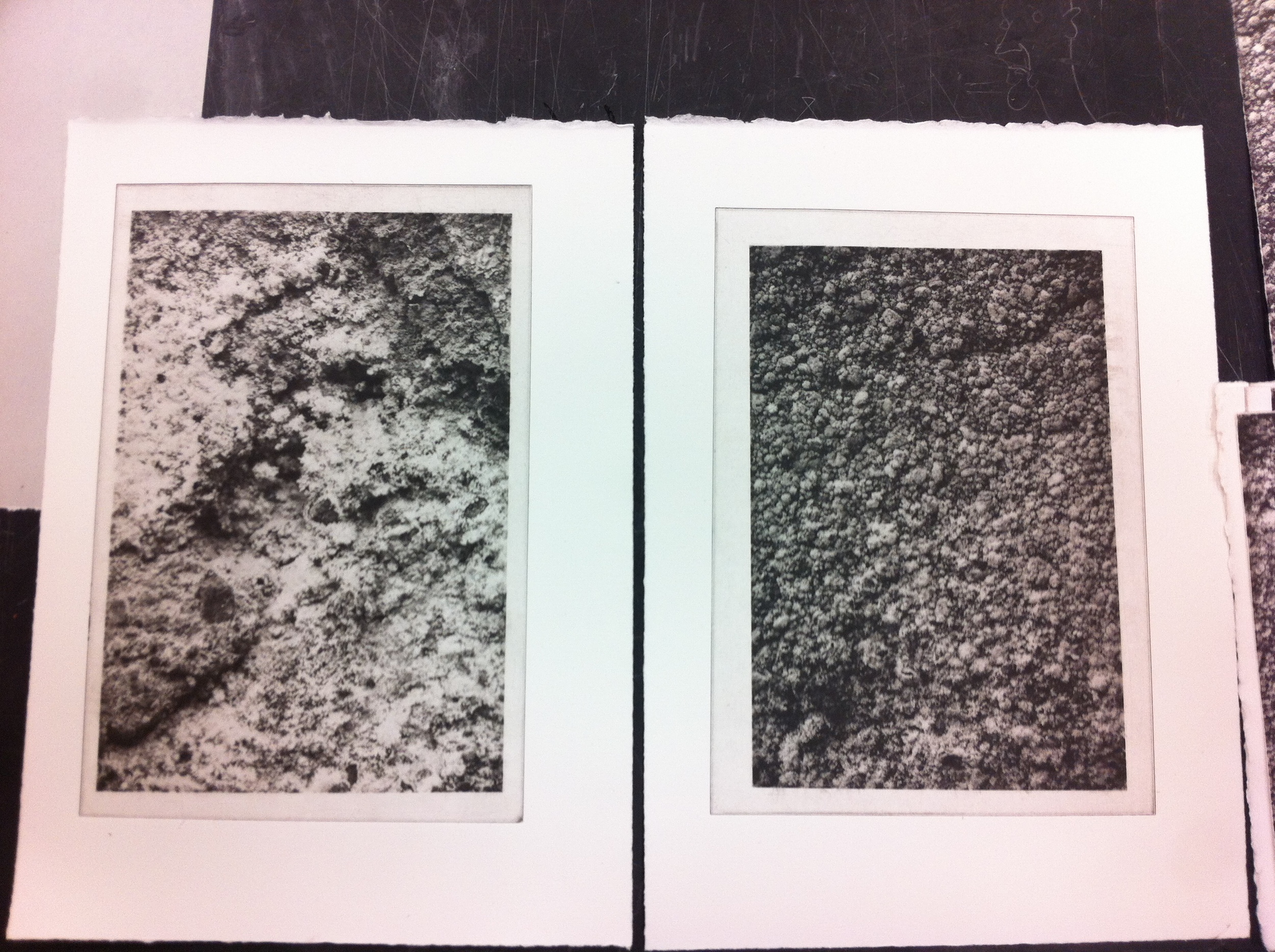
Summer, 2014 - I finally was able to finish the editions of prints that I started from my residency in Venice last summer. These are in process shots while printing at Rutgers. Many, many thanks is owed to Randy Hemminghaus for all his help - these editions wouldn't have happened without him.
JRR grad school studio 2014
JRR grad school studio 2014
JRR grad school studio 2014
Kandis Williams - Venus Is a Sacrificial Form, 2016
Madonna - Nobody Knows Me - MDNA Tour - 2012
Madonna - Get Stupid - Sticky & Sweet Tour - 2008
Madonna - Sorry Remix - The Confessions Tour - 2006
Hung Liu
2014
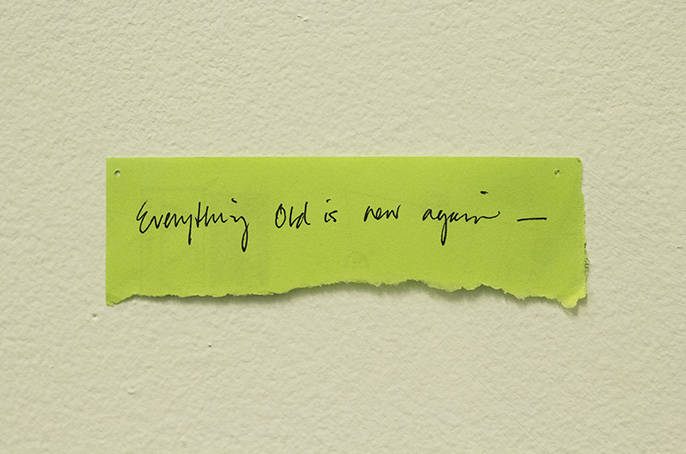




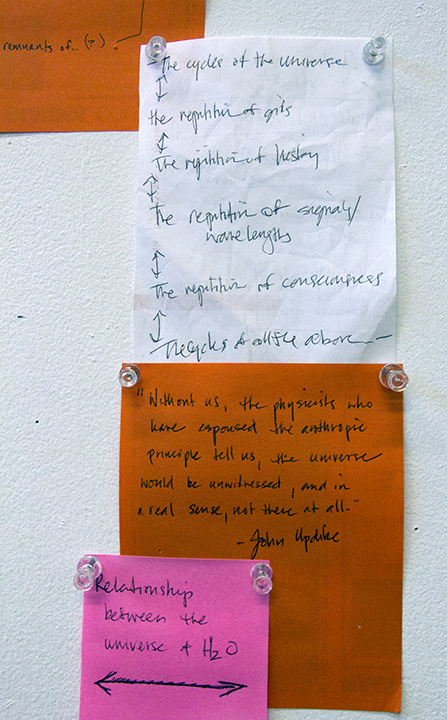


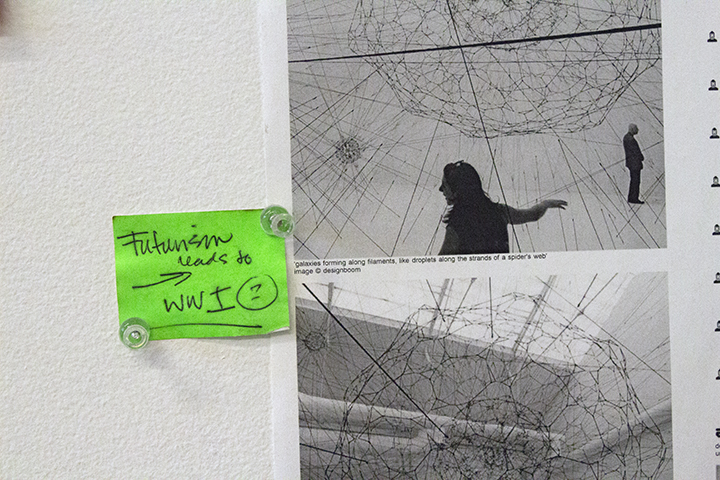
Abstract cyanotypes from my printmaking residency in Venice.
In my grad school studio, circa 2013. Photo by Vina Sananikone.
All of my creation is an effort to weave a web of connection with the world; I am always weaving it because it was once broken.
Anais Nin, 1942
How to Live Without Irony (via The New York Times)
Sincerity, Not Irony, Is Our Age's Ethos (via The Atlantic)
We've Been Arguing About Irony vs. Sincerity for Millennia (via The Atlantic)
New Sincerity (via Wikipedia)
